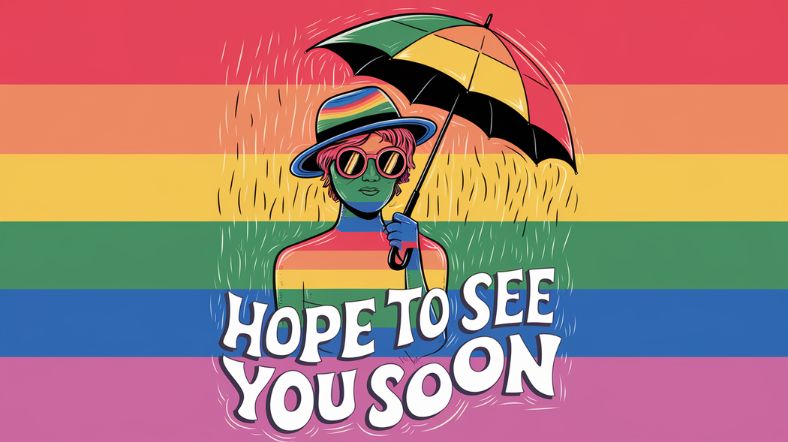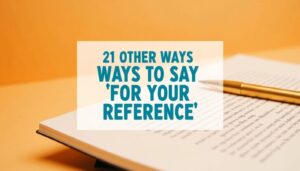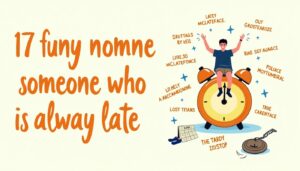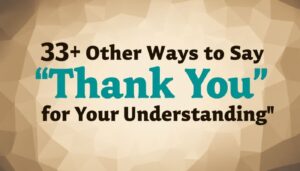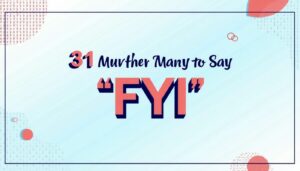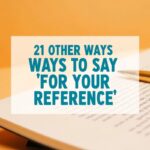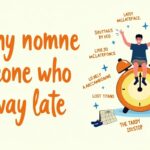In a world where meaningful connections matter more than ever, how we say goodbye can have a lasting impact. While the classic “Hope to see you soon” serves its purpose, it can sometimes feel a bit predictable.
In this article, we’ll explore 23 alternatives that bring fresh energy to your farewells. Whether you’re saying goodbye to a close friend, a colleague, or someone you’ve just met.
These phrases will allow you to express enthusiasm, warmth, and excitement for future connections in both professional and casual settings.
“Can’t Wait to Catch Up!”
This phrase exudes excitement and eagerness. It’s ideal for casual conversations with friends, family, or colleagues when you want to emphasize your enthusiasm for reconnecting.
Example:
“It’s been so long! Can’t wait to catch up over dinner next week!”
Impact: It shows genuine interest in the relationship and anticipation for meaningful conversation.
“Looking Forward to Our Next Gathering”
Slightly more formal, this phrase is great for professional settings or group events. It conveys optimism about meeting again, without being overly casual.
Example:
“It was great meeting you at the seminar. Looking forward to our next gathering.”
Impact: It expresses both professionalism and genuine interest in future interactions.
“Until We Meet Again”
A classic phrase that carries a sense of continuity and optimism, perfect for both personal and professional farewells. It suggests that your connection will resume at some point, even if it’s not immediately.
Example:
“Thank you for everything today. Until we meet again!”
Impact: It carries emotional weight, suggesting that the relationship continues to evolve, no matter the distance.
“See You Down the Road”
This casual, friendly expression suggests that while the exact time of reunion may be uncertain, you’re confident your paths will cross again.
Example:
“It was so good to see you! See you down the road!”
Impact: It offers a hopeful, easygoing tone, making it ideal for close friends and informal interactions.
“Another Way to Say “Hope to See You Soon”
If you’re looking for a fresh expression to show that you’re looking forward to seeing someone again, here are a few great alternatives to “hope to see you soon”:
- “Looking forward to our next meeting.”
- Meaning: A more formal alternative, ideal for both personal and professional settings.
- Example: “It was a pleasure discussing the project with you today. Looking forward to our next meeting.”
- Impact: Signals anticipation and excitement while maintaining a professional tone.
- “Can’t wait to reconnect!”
- Meaning: Casual and friendly, this phrase expresses eagerness to catch up.
- Example: “I had such a great time! Can’t wait to reconnect soon.”
- Impact: Reflects personal interest and shows enthusiasm for future conversations.
- “See you soon!”
- Meaning: A simple yet warm alternative, perfect for both casual and professional contexts.
- Example: “Take care, see you soon!”
- Impact: This keeps it friendly and positive while keeping the connection open.
- “Looking forward to catching up.”
- Meaning: This phrase expresses excitement for future conversations or updates.
- Example: “I’ve really enjoyed our chat. Looking forward to catching up soon!”
- Impact: It conveys anticipation for a more in-depth conversation.
- “Until next time!”
- Meaning: A warm and optimistic phrase, suggesting that your relationship will continue in the future.
- Example: “Thank you for the great discussion, until next time!”
- Impact: This feels heartfelt and leaves a sense of continuity in the relationship.
“Hope to See You Soon Synonym”
A synonym for “hope to see you soon” can express the same sentiment in different ways. Here are some phrases that work well as substitutes:
- “Excited to see you again!”
- Meaning: Focuses on your excitement about reuniting with the person.
- Example: “It was great to meet you today. Excited to see you again!”
- Impact: This conveys enthusiasm and eagerness in a very personal way.
- “I’ll be looking forward to seeing you again.”
- Meaning: Similar to “hope to see you soon,” this phrase emphasizes your anticipation.
- Example: “I’ll be looking forward to seeing you again at the event!”
- Impact: It’s a more formal way to express the same sentiment, ideal for both casual and professional settings.
- “See you in the near future!”
- Meaning: Suggests that a meeting will occur soon but is less specific about when.
- Example: “It was nice talking! See you in the near future!”
- Impact: It implies a sense of urgency but leaves the exact time open.
“Hope to See You Soon Meaning”
The phrase “hope to see you soon” carries the meaning of expressing your desire or expectation to reconnect with someone in the near future.
It communicates a sense of optimism and excitement about the next meeting, whether it’s for social, business, or other reasons.
This phrase conveys that the time spent with the person is valued and that there is a genuine desire for future interactions.
“Hope to See You Soon in Spanish”
In Spanish, a common way to express “hope to see you soon” is:
“Espero verte pronto.”
- Meaning: Direct translation of “I hope to see you soon.”
- Example: “Ha sido un placer hablar contigo. Espero verte pronto.”
- Impact: This phrase is commonly used in both casual and formal Spanish-speaking interactions.
“Hope to See You Soon in Tagalog”
In Tagalog, “hope to see you soon” is expressed as:
“Sana magkita tayo muli.”
- Meaning: A polite and warm way to express hope for a future meeting.
- Example: “Salamat sa iyong oras, sana magkita tayo muli!”
- Impact: This is an inviting and culturally respectful way to suggest a future reunion.
“See You Soon Synonym”
If you are looking for a synonym for “see you soon,” here are some alternatives that you can use depending on the level of formality:
- “Catch you later!”
- Meaning: A very casual and friendly expression.
- Example: “Thanks for hanging out! Catch you later!”
- Impact: Perfect for friends or close acquaintances, this phrase shows enthusiasm and casual tone.
- “Talk to you soon!”
- Meaning: It indicates that you expect to talk or reconnect soon.
- Example: “I’ll send you the details later, talk to you soon!”
- Impact: More suited for phone calls or virtual interactions, it keeps the conversation flowing.
- “I’ll see you around.”
- Meaning: This is a casual way of saying you expect to see someone in the future, even if no exact plans are made.
- Example: “It was great catching up! I’ll see you around.”
- Impact: It’s a relaxed way to express that you’ll cross paths again soon.
“Another Way to Say Hope to See You There”
When you want to convey the sentiment of “hope to see you there,” here are some alternatives to consider:
- “Looking forward to seeing you there.”
- Meaning: Expresses excitement and anticipation about seeing the person at a specific event.
- Example: “I’m excited for the concert. Looking forward to seeing you there!”
- Impact: This shows eagerness and builds anticipation for a shared experience.
- “Can’t wait to meet you at the event.”
- Meaning: A more direct and enthusiastic way of expressing the desire to see someone at a specific location or event.
- Example: “It’ll be great catching up at the conference, can’t wait to meet you there!”
- Impact: This conveys excitement and indicates you are already looking forward to the occasion.
“Hope to See You Soon Reply”
When someone says “hope to see you soon” to you, you might want to respond with something equally warm and positive. Here are some ways to reply:
- “Likewise, I’m looking forward to it!”
- Meaning: This response reflects mutual enthusiasm about seeing each other soon.
- Example: “Hope to see you soon!” “Likewise, I’m looking forward to it!”
- Impact: A polite and positive reply that reinforces the sentiment of eagerness.
- “I can’t wait either!”
- Meaning: A casual, friendly response that mirrors the sentiment.
- Example: “Hope to see you soon!” “I can’t wait either!”
- Impact: This response adds an informal and excited tone to the exchange.
- “I’m excited for our next meeting too!”
- Meaning: A more formal reply, perfect for business contexts.
- Example: “Hope to see you soon!” “I’m excited for our next meeting too!”
- Impact: This reply conveys a professional yet warm response, suitable for workplace interactions.
“Excited for Our Next Adventure”
Great for friends or colleagues who enjoy exploring together, this phrase reflects the excitement of future plans, whether they involve travel, a fun project, or a new experience.
Example:
“That was such a blast! Excited for our next adventure!”
Impact: It infuses energy into the farewell, reminding the other person that there’s much more fun ahead.
“Looking Forward to Reconnecting”
Perfect for friends or colleagues you’ve lost touch with but want to re-engage with. It implies a renewed interest in strengthening the relationship.
Example:
“It’s been a while! Looking forward to reconnecting soon.”
Impact: It communicates warmth and a desire for deeper engagement, making it perfect for a variety of contexts.
“I’m Counting the Days!”
When you’re really looking forward to a reunion, this phrase shows just how excited you are. It’s excellent for close friends or loved ones.
Example:
“Just a few more days until we meet up! I’m counting the days!”
Impact: It highlights eagerness and excitement, making the other person feel special and appreciated.
“Until Next Time!”
Simple and effective, this phrase works in both casual and professional contexts. It conveys that the connection is ongoing, even though the next meeting may not be immediately scheduled.
Example:
“Take care and stay safe—until next time!”
Impact: It’s friendly yet professional, creating a sense of continuity in your relationship.
“Let’s Plan Our Next Hangout Soon!”
If you’re hoping to get together with someone but haven’t set a date yet, this phrase encourages action while conveying eagerness.
Example:
“Had a great time today! Let’s plan our next hangout soon!”
Impact: It’s action-oriented, motivating the other person to make plans, while also showing that you value your time together.
“Excited for What’s Next!”
Perfect for both personal and professional settings, this phrase conveys an optimistic outlook about the future, suggesting that your relationship will continue to grow and evolve.
Example:
“Thanks for the great meeting today. Excited for what’s next!”
Impact: It conveys forward-thinking, keeping the mood optimistic and professional.
“Let’s Catch Up Soon!”
Short and sweet, this phrase works well in both informal and semi-formal contexts. It’s ideal when you want to keep the tone light but still express enthusiasm.
Example:
“That was fun! Let’s catch up soon.”
Impact: It keeps things simple and friendly while still suggesting that you’re looking forward to a follow-up.
“Keep Me Posted Let’s Plan Soon!”
When you want to take the initiative in planning, this phrase encourages the other person to reach out and helps ensure that the next meeting actually happens.
Example:
“Keep me posted on your schedule, and let’s plan soon!”
Impact: It puts the ball in the other person’s court while still maintaining your enthusiasm for the next meet-up.
“I Can’t Wait for Our Next Meeting”
Ideal for professional contexts, this phrase clearly communicates that you’re looking forward to future business interactions, suggesting anticipation for productive discussions.
Example:
“It was a pleasure meeting with you today. I can’t wait for our next meeting.”
Impact: It conveys professionalism, while also expressing genuine interest in future collaborations.
“Let’s Stay in Touch”
This phrase is perfect when you want to keep the connection alive, especially in professional or more distant relationships. It’s a reminder that the door is always open for future interactions.
Example:
“It was nice chatting! Let’s stay in touch.”
Impact: It keeps the conversation open and encourages ongoing communication, making it ideal for networking or professional relationships.
“Looking Forward to Our Next Conversation”
For more formal or professional settings, this phrase suggests that you’re eager for more thoughtful discussions, whether they’re about work or mutual interests.
Example:
“Great catching up with you today. Looking forward to our next conversation.”
Impact: It conveys a sense of intellectual engagement and mutual respect, making it suitable for professional relationships.
“I’m Sure We’ll Cross Paths Again Soon”
This phrase works well in both professional and casual settings. It conveys optimism that, even if you don’t have a specific plan, you’ll reconnect in the future.
Example:
“It was great catching up! I’m sure we’ll cross paths again soon.”
Impact: It’s a positive, hopeful expression that reinforces your connection without requiring specific plans.
Why These Alternatives Work?
Using different ways to say “hope to see you soon” not only adds variety to your communication but also strengthens your relationships.
Whether you’re speaking to a close friend, a colleague, or someone you’ve just met, the right phrase can leave a lasting impression. Here’s why these alternatives are effective:
- Tailored to Different Contexts: From professional meetings to casual catch-ups, these phrases can be adjusted for any situation.
- Builds Excitement and Anticipation: Phrases like “I’m counting the days!” or “Can’t wait for our next adventure” build excitement and let the other person know you’re genuinely looking forward to the next interaction.
- Encourages Action: Phrases like “Let’s plan our next hangout soon” or “Keep me posted—let’s plan soon” encourage both parties to take action, ensuring that the next meeting actually happens.
Conclusion
By using these 23 alternatives, you can enhance your communication and strengthen your relationships in both personal and professional contexts.
The next time you’re wrapping up a conversation, try experimenting with one of these fresh expressions.
You’ll leave a positive, lasting impression, while reinforcing your excitement to reconnect in the future. Whether formal or casual, these alternatives will help you express genuine enthusiasm and maintain strong connections.

Mark Tony is a grammar expert with 5 years of experience, specializing in teaching English grammar, enhancing writing, reading, and speaking skills for diverse learners.
